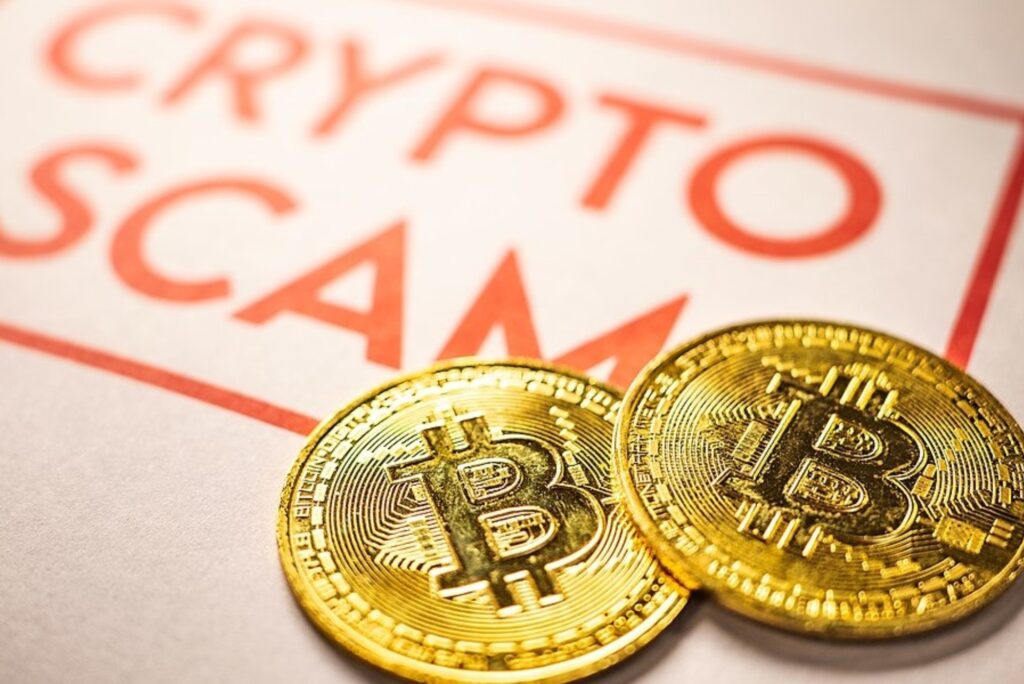Bitcoin scams in Karnataka have proliferated, preying on unsuspecting individuals drawn to the allure of cryptocurrency.
Ponzi Schemes: A Common Trap
Ponzi schemes masquerading as legitimate investment opportunities often entice victims with promises of unrealistically high returns.
Phishing Attacks: Deceptive Tactics
Sophisticated phishing attacks employ fake websites or emails impersonating trusted entities to steal sensitive information or cryptocurrency holdings.
Pump and Dump: Manipulative Trading
Scammers artificially inflate the price of a cryptocurrency through false claims or coordinated buying, only to sell off their holdings once the price peaks, leaving investors with losses.
Fake ICOs: Illusion of Investment
Fraudulent Initial Coin Offerings (ICOs) promise groundbreaking projects or products, enticing investors to contribute funds that are never used as promised. What is Bitcoin Scam in Karnataka

Recognizing Red Flags
Recognizing red flags is crucial for identifying potential issues or fraudulent activities, especially in contexts like financial transactions, job offers, or online interactions. Here’s a detailed guide on how to effectively recognize red flags:
Understand Common Red Flags
- Inconsistencies: Look for inconsistencies in information or behavior. For instance, in financial schemes, discrepancies between advertised returns and actual outcomes can be a red flag.
- Too Good to Be True: Be wary of offers or claims that seem too good to be true. High returns with little risk are often indicative of scams or fraudulent schemes.
- Pressure Tactics: Scammers often use high-pressure tactics to force quick decisions. If you’re being rushed to make a decision, it’s a red flag.
Verify Information
- Check Credentials: For job offers or business opportunities, verify the legitimacy of the organization or individuals involved. Look for reviews, company registration details, and contact information.
- Cross-Check Details: Cross-check any information provided with trusted sources. This can include verifying investment opportunities with financial regulators or checking reviews of online platforms.
Watch for Unusual Requests
- Sensitive Information: Be cautious if you’re asked to provide sensitive information like Social Security numbers, bank details, or passwords, especially if the request is unexpected.
- Unconventional Payment Methods: Scammers often request payments through unconventional methods like gift cards or cryptocurrencies. Legitimate transactions usually involve standard payment methods.
Assess Communication Patterns
- Unprofessional Communication: Poor grammar, spelling mistakes, or unprofessional tone in communications can be a red flag, especially in official or business-related interactions.
- Lack of Transparency: If the communication lacks transparency or avoids answering specific questions, it could indicate a scam or deceitful behavior.
Evaluate the Source
- Anonymous or Unverifiable Sources: Be cautious with offers or information from anonymous or unverifiable sources. Scams often come from sources that cannot be traced or verified.
- Unverified Platforms: For online transactions or investments, use reputable platforms with established security measures and positive reviews.
Look for Behavioral Patterns
Avoiding Face-to-Face Meetings
If someone is consistently avoiding face-to-face meetings or phone calls and prefers only email or text communication, it could be a red flag.
Emotional Manipulation
Scammers often use emotional manipulation, such as creating a sense of urgency or exploiting personal fears, to push their agenda.
Seek Professional Advice
- Consult Experts: If in doubt, consult financial advisors, legal professionals, or other experts to get a second opinion. They can help identify red flags and provide guidance.
Educate Yourself
- Stay Informed: Keep yourself informed about common scams and fraudulent schemes. Understanding the typical tactics used can help you better recognize red flags.
Beware of schemes offering guaranteed high returns with minimal risk, as legitimate investments carry inherent risks.
Lack of Regulation
Scammers often operate outside regulatory frameworks, exploiting regulatory gaps to conduct fraudulent activities.
Pressure Tactics
Be wary of high-pressure sales tactics or requests for immediate action, as legitimate investments allow time for due diligence.
Safeguarding Against Scams
Educate Yourself
Stay informed about the latest scams and common tactics used by fraudsters to protect yourself from falling victim.
Verify Credentials
Before investing, research the background and credentials of individuals or companies offering investment opportunities.
Exercise Caution
Exercise caution when sharing personal or financial information online, and always verify the authenticity of websites or emails before providing sensitive information.

Report Suspicious Activity
Report any suspicious activity or potential scams to the appropriate authorities, such as local law enforcement or regulatory agencies.
Bitcoin Graph
The Bitcoin graph illustrates the fluctuating value of Bitcoin over time, influenced by various factors such as market demand, regulatory developments, and investor sentiment. Analyzing the Bitcoin graph can provide valuable insights into market trends and potential investment opportunities. However, it’s essential to approach cryptocurrency investment with caution and conduct thorough research to mitigate risks associated with volatility and potential scams.











